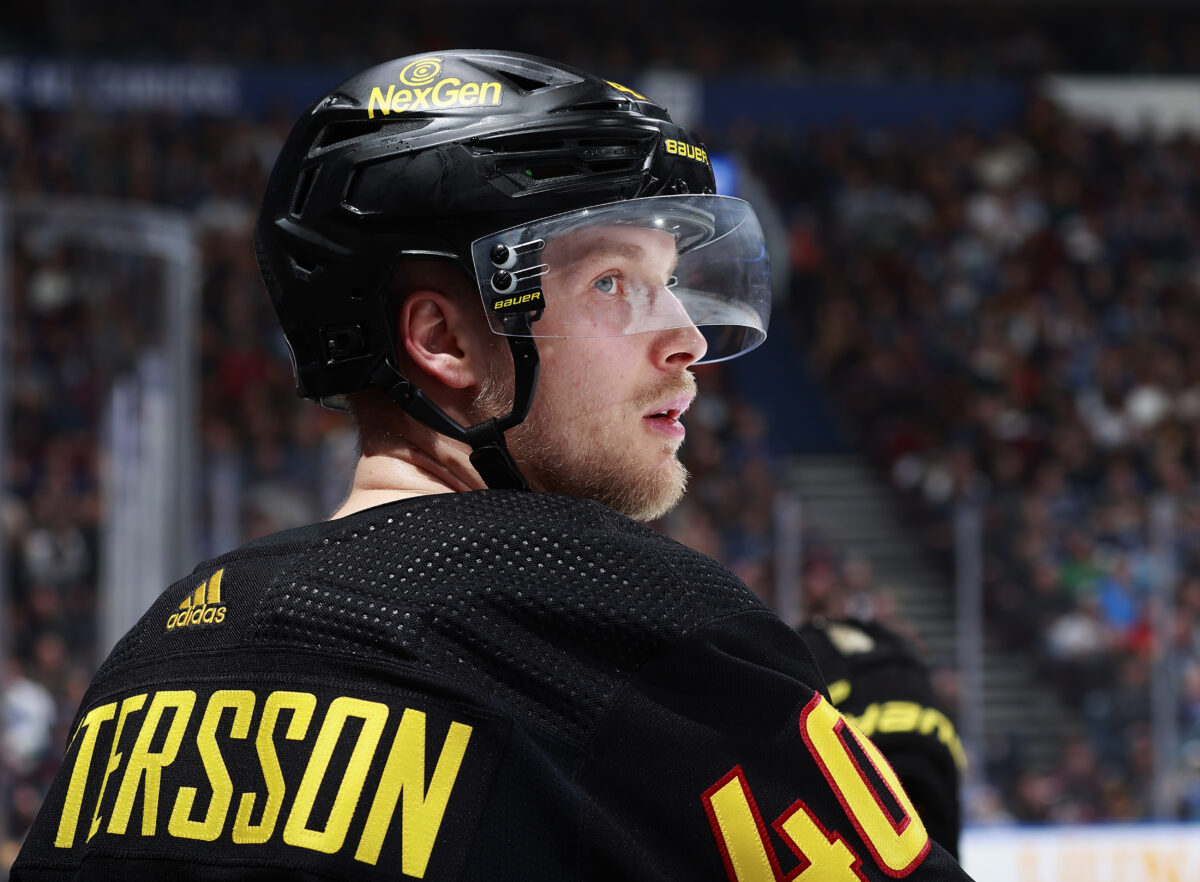As the Vancouver Canucks went up three games to two against the Edmonton Oilers during both team’s second-round postseason series, it seemed they were poised to clinch the series. However, the Oilers rallied, winning two straight games to knock the Canucks out of the playoffs. One critical factor in the Canucks’ disappointing finish was the performance of one of their best players, Elias Pettersson, who was visibly not at full speed.
Throughout the series, something seemed off with Pettersson. Observing him on the ice, it was clear he wasn’t engaging physically as usual. There were moments where he appeared hesitant, pulling back from collisions that could have won his team the puck. It was evident that his normal, more aggressive play was missing.
Related: What Blueger, Suter, and Lafferty Have Brought to the Canucks
Earlier in the season, Pettersson had spoken about increasing his physicality after gaining offseason strength and weight. Indeed, he had demonstrated an improved physical presence on the ice. However, during the playoffs, this same physical edge was notably absent. Something was wrong.
In the end-of-season press interviews, Pettersson revealed that he had been playing with a knee injury. This injury had prevented him from fully engaging in the physical aspects of the game, hindering his performance significantly. Despite a few solid moments, the Pettersson the fans had come to know was not the one on the ice during those crucial games. His injury was a pivotal reason for the Canucks’ inability to close out the series against the Oilers.
Canucks Analysts Discuss the Contrasting Viewpoints on Pettersson’s Injury
In a recent discussion, Halford and Brough laid out the contrasting viewpoints regarding Pettersson’s injury comments during the Canucks’ end-of-season media day. The injury to Pettersson stirred a fervent reaction from the fan base on social media, prompting the question that Halford and Brough engaged in to begin the conversation: Which side are you on, Pettersson’s defenders or detractors?
The conversation in the video above was engaging because it was tongue-in-cheek. Second, it brought up some critical issues about the nature of social media and how the organization handled the injury.
The discussion shared the perspectives of Pettersson’s defenders, who attributed blame to the Canucks’ medical staff for purportedly failing to care for their star player adequately. On the opposing side were the detractors, speculating that Pettersson’s knee injury was a convenient justification for a season of lackluster performance. The ensuing discussion between the two analysts encompassed the intricacies of injuries in professional sports, from players like Connor McDavid to prioritizing toughness over the need for rest and rehab during the regular season.
However, in their engagement, Halford and Brough made fun of the media’s lack of nuance and its seeming purpose of causing controversy and riling fans up. (In doing so, they also pointed fingers at themselves as part of that media.)
Related: Tocchet’s Canucks Coaching Genius Mirrors Ali’s Rope-a-Dope
Near the end of their conversation, both analysts took an introspective turn as they addressed the complexities of social media dynamics. The innuendo that both the detractors and the supporters presented compelling arguments left the hosts questioning whether taking a middle ground was feasible. They ultimately concluded that the role of social media often involves stirring controversy rather than seeking truth. They landed on the belief that finding a middle ground wasn’t even the point.
The discussion profoundly reminded fans of the tension between player, management, and coaching dynamics, the pressure on Pettersson to excel, and the interplay of egos within the organization, which surfaced as underlying factors. The two analysts quickly pointed at Jack Adams-winning NHL coach Rick Tocchet‘s note that it was only a “little” tendonitis.
The conversation concluded with reflections on the curious handling of Pettersson‘s injury and the implications for the team’s performance. The inadequacy of the explanation that Pettersson’s struggles were merely part of a “testing ground” approach cast doubts on the rationale behind his continued participation in non-essential games. Additionally, they contemplated the strategic considerations of resting pivotal players during the regular season to optimize performance during the playoffs, underscoring the enigmatic nature of the decisions made.

At its most profound level, the discussion encapsulated the complicated nature of the situation surrounding Pettersson. It underscored the complexities inherent in managing players and injuries, the interplay of public perception, and the delicate balance of player expectations and organizational pressures. Ultimately, the discussion highlighted the need for transparency, clarity, and a holistic understanding of the factors in such high-stakes environments.
Related: NHL Rumors: Oilers, Lightning, Canucks, Penguins
The points made in the conversation illustrated the depth of the Pettersson debacle and the intricate web of influences that shape the narratives surrounding player performance, team dynamics, and organizational decision-making. The blurred lines between accountability, medical assistance, and competitive strategies were brought to the forefront, leaving ample room for continued reflection and debate.
